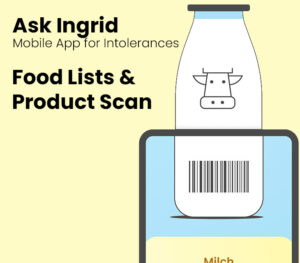Letzte Aktualisierung am 11. December 2023 von Dr. Michael Zechmann-Khreis
Once fructose intolerance has been diagnosed, it is important to observe the so-called elimination diet or elimination period. As the diagnosis is often only made after many years of agony and many misdiagnoses, the intestine is damaged accordingly. The good thing is that our gut recovers quite quickly – if we give it a break of two to four weeks, i.e. the elimination diet. It is important that this period is accompanied by a state-recognized nutritionist (ecotrophologist, dietician), as it is very difficult to stick to a proper diet consistently.
Eating and fasting
In our latitudes, there are no famines or seasonal famines. Availability more. There is always everything. In addition, the food is increasingly industrialized, the addition of various substances increases the Food more durable, shinier, heavier, looser or simply more beautiful made. Inevitably, quality and naturalness decrease, the quantity, however.
The concept of fasting exists in almost every human culture. Fasting means restricting your diet for a limited period of time and mental concentration on food. It does not mean “starving”. Cleansing the intestines, resting the digestive system and mental preoccupation with one’s own diet are undoubtedly The basics of successful fasting. The elimination diet can also be as fructose fasting. Those affected have reports that an annual fructose fast for 1-2 weeks, i.e. simply the annual repetition of the elimination diet, the quality of life increases enormously.
elimination diet – checklist
The first few weeks after diagnosis are called the elimination diet . It is about eliminating the substances that make the gut ill and giving the gut the chance to heal. This usually happens in two to four weeks – depending on the damage. It is important that all disease-causing substances are removed from the diet. And if you have another additional intolerance, also eliminate the substances that are not good for you in this respect – at least for the time you are on elimination diet!
We have summarized the most important points relating to the elimination diet here. If you want, get our book “First aid after diagnosis: fructose intolerance, lactose intolerance and histamine intolerance“, where you will find everything you need to know for the elimination diet. Including more than 90 recipes.
Basic points of the elimination diet
- Always start the withdrawal phase in consultation with your doctor.
- Deficiency symptoms: Deficiency symptoms can occur with untreated fructose intolerance due to a diet that damages the gut. Your doctor should therefore carry out a blood count before the withdrawal phase to detect any deficiencies. However, you don’t have to be afraid of developing deficiencies during the waiting period. AFTER elimination diet, however, you should make sure you eat a balanced diet.
- Watch out for additional intolerances or allergies.
- Watch out for other illnesses that could make your fast dangerous. This applies, for example, to liver diseases or eating disorders.
- You should not start an elimination diet while taking antibiotics.
- Do you have time to focus on your diet in the coming weeks? The elimination diet should be taken during a stress-free period.
- Lent is a good time to do this, as you don’t have to expect any social pressure because you are fasting.
- Concentrate on eating, i.e. don’t read the newspaper or watch TV at the same time.
- Keep a food and symptom diary
- Don’t let others influence you. We live in a culture where everyone believes they are an expert – especially when it comes to nutrition.
- Find help and support for the elimination diet phase in internet forums and Facebook groups.

Eating and drinking during the elimination diet
- Use our fructose table or the“Ask Ingrid!” app
- “Counting grams” is not helpful. Fructose tables only ever give guide values or the experiences of others.
- Start the first few days without any vegetables and fruit, without any types of sugar.
- It is best to drink only tap water and herbal teas (e.g. aniseed-fennel-caraway)
- Coffee and cigarettes: If you only want to drink your coffee or tea with sugar, replace it with stevia products (check the list of ingredients) or dextrose. Other sweeteners are not recommended because they are also poorly tolerated by many of those affected. You can test sweeteners individually after the elimination diet and reintroduce them into your diet. It’s even better if you cut coffee out of your diet completely. Caffeine puts the body in a state of stress. As stress usually affects the stomach, you should generally avoid caffeine during the elimination diet. It is also best to give up cigarettes, as nicotine causes the intestines to become restless, so to speak.
- Black tea is often – not always – tolerated. If you can’t do without caffeine, you should give it a try. The tannins in black tea are good for the stomach. Green tea or mate tea are also usually well tolerated.
- Always cook fresh and yourself!
- Do not eat ready-made products.
- Eat small portions, but rather several times a day.
- Flatulence and bowel sounds are normal. What we tend to forget, especially those of us with intolerances, is that our digestive system is noisy and smelly. Gases and unpleasant odors are produced during digestion, our intestines sometimes gurgle, bubble, pinch and our digestive system lets the resulting gases escape through the only two possible openings, the mouth and the anus. That is quite normal. Our chair is also sometimes firm, sometimes softer. So not every twinge and gurgle, every soft stool and every burping is also a symptom or indication of too much consumption of fructose, lactose, sorbitol or other substances.
- Don’t make any exceptions! It’s easy to cope with the elimination phase without chocolate or sweet sins.


